Salkantay Trek Day 2: The Challenging Mountain Pass
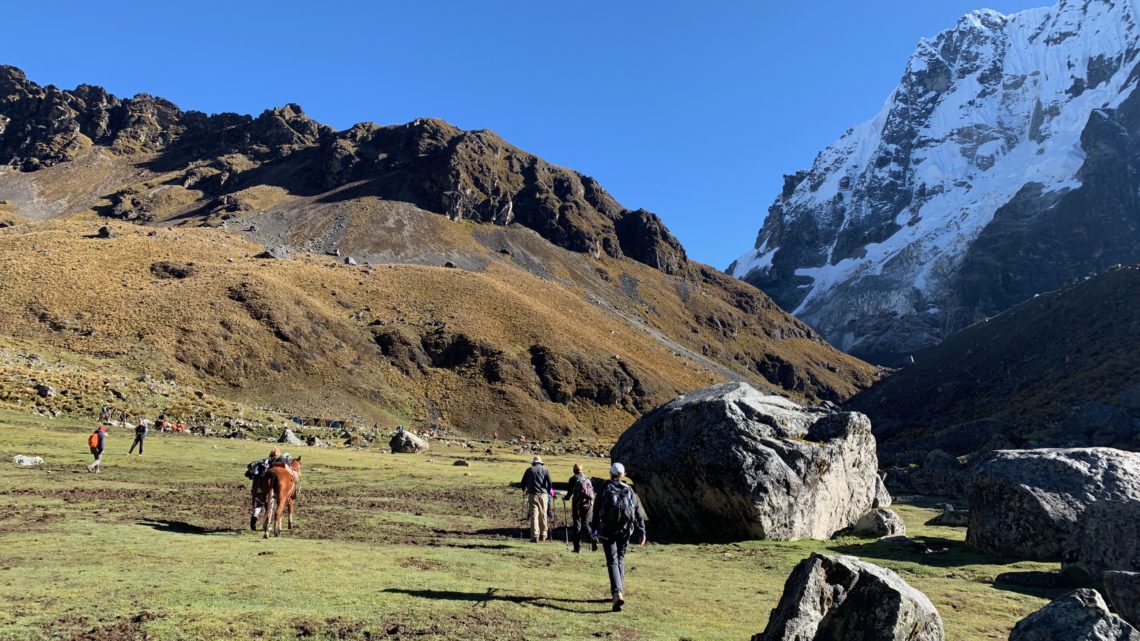
On day one of the Salkantay Trek, I and four other travelers traversed some beautiful Andean landscapes, hiked up to the pristine Humantay Lake, and camped out under the stars. Although the first day of this multi-day trek was a challenge, the hardest part was yet to come.
An Early Start
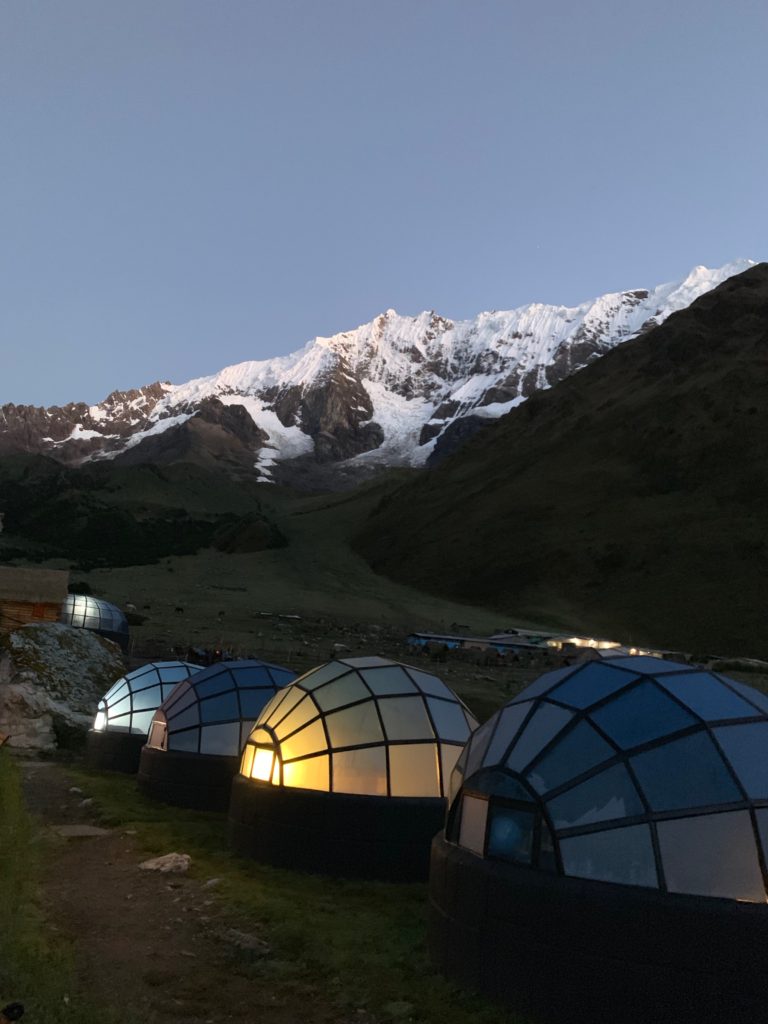
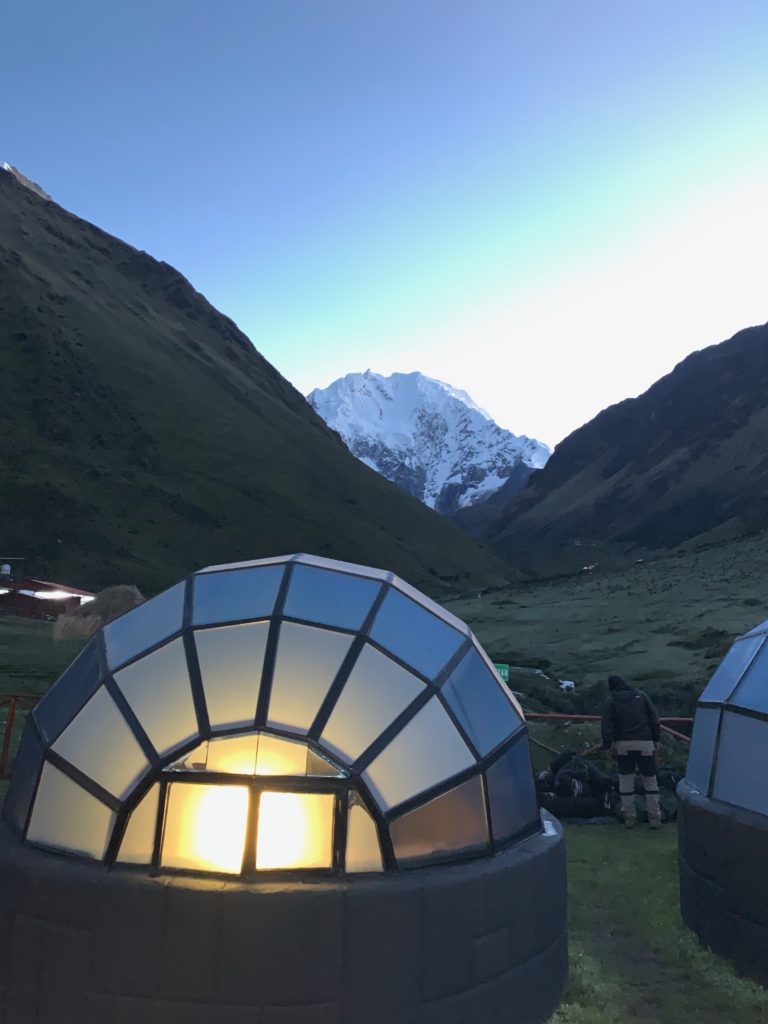
On day two, we woke up at the first crack of dawn at 5:30 a.m. The sun was only beginning to rise against the snowy mountains, and the lights within the glass domes glowed like lanterns against the dawn sky. Due to the altitude, the temperature was barely above freezing, and thus, I put on all of my layers. Our chef came around to serve everyone some morning coca tea to get us energized for the intense hike ahead of us. Shortly after, we all gathered in the main hut for a delicious breakfast.
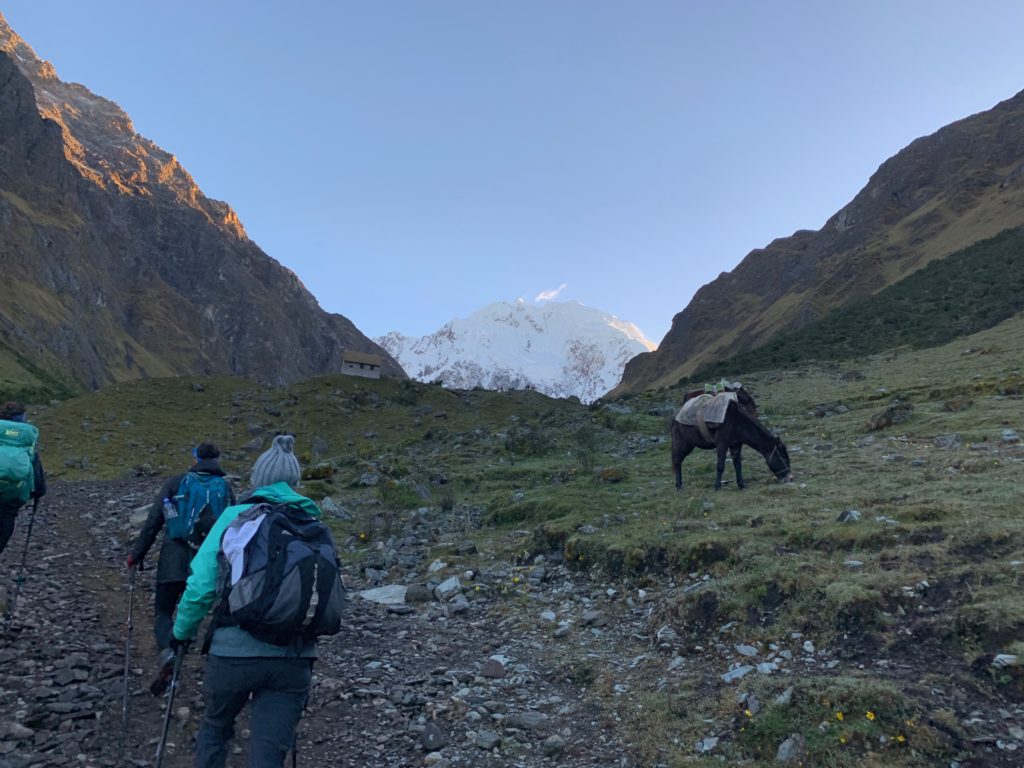
Our goal for the day was to climb to the top of the Salkantay Pass in front of the mountain that we could see in the distance. As we left Soraypampa, Elvis led our group towards our initial ascent through a beautiful valley surrounded by rugged mountains. Even after a night’s rest, trekking up this gentle slope was not a cakewalk. We began our hike at 12,861 feet and we were only going to get higher in elevation for the first part of the day.
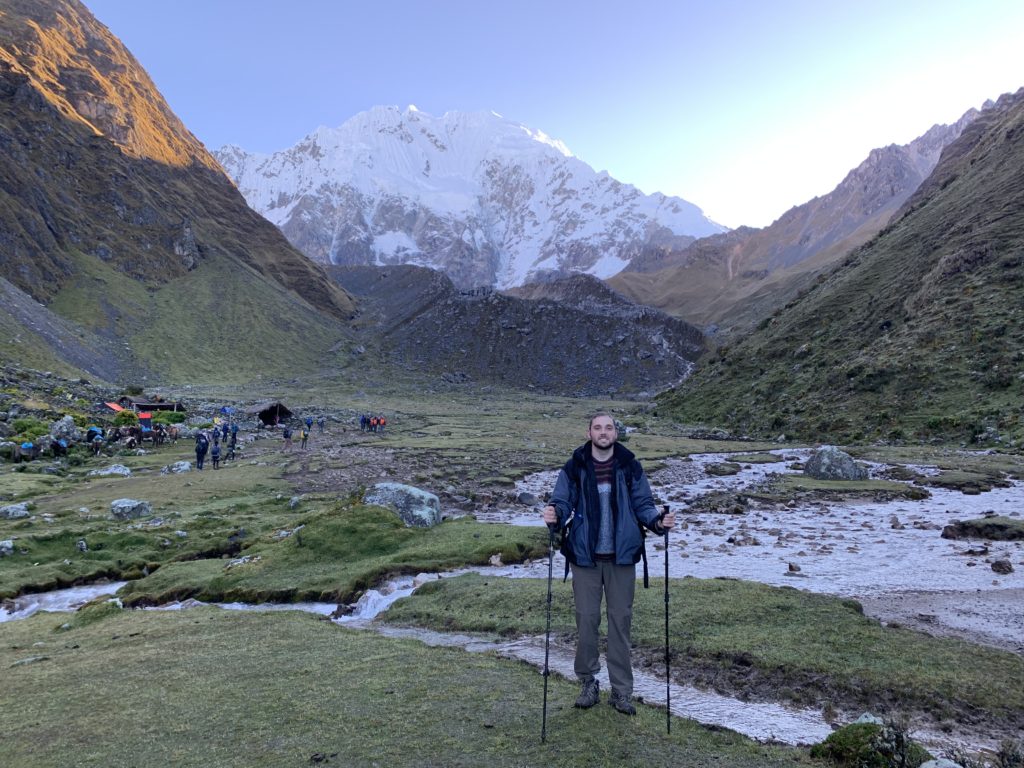
We passed through several open valleys, where I really got to appreciate the beauty of the Andes. Although the majority of the mountains were rocky and covered with grass, the snow-capped Salkantay Mountain stood proud above its surroundings. The white snow made for a dramatic contrast against the blue sky and the surrounding green and brown mountains, making
The Trail of the 7 Snakes
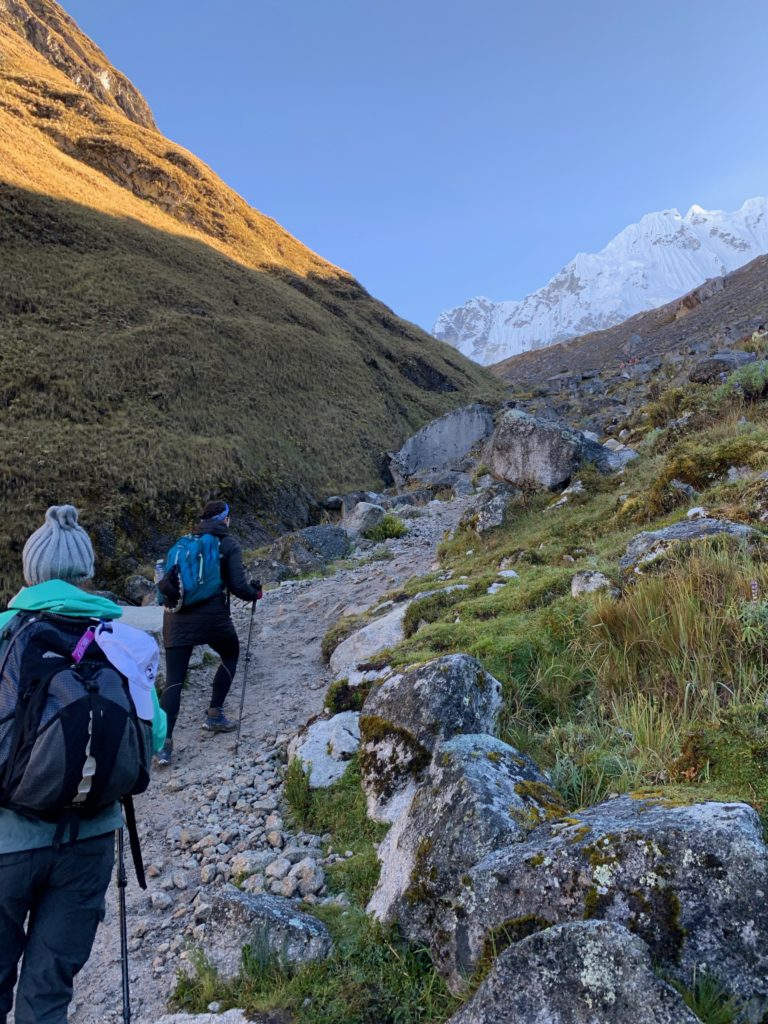
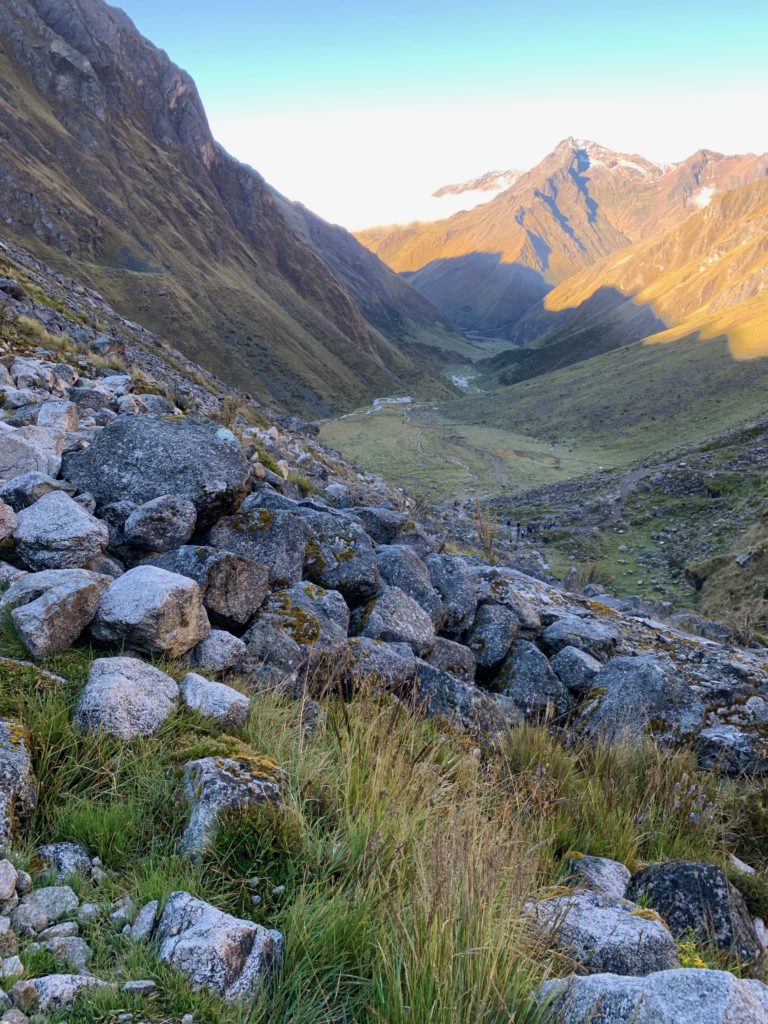
After reaching a height of 13,451 feet, we approached a steep path known as “The Trail of the 7 Snakes.” In a short period of time, we would be hiking up to 14,436 feet. The trail was characterized by constant switchbacks, which were challenging to navigate. In order to keep myself energized at this elevation, I continued to chew coca leaves, but I still needed to stop several times to catch my breath.
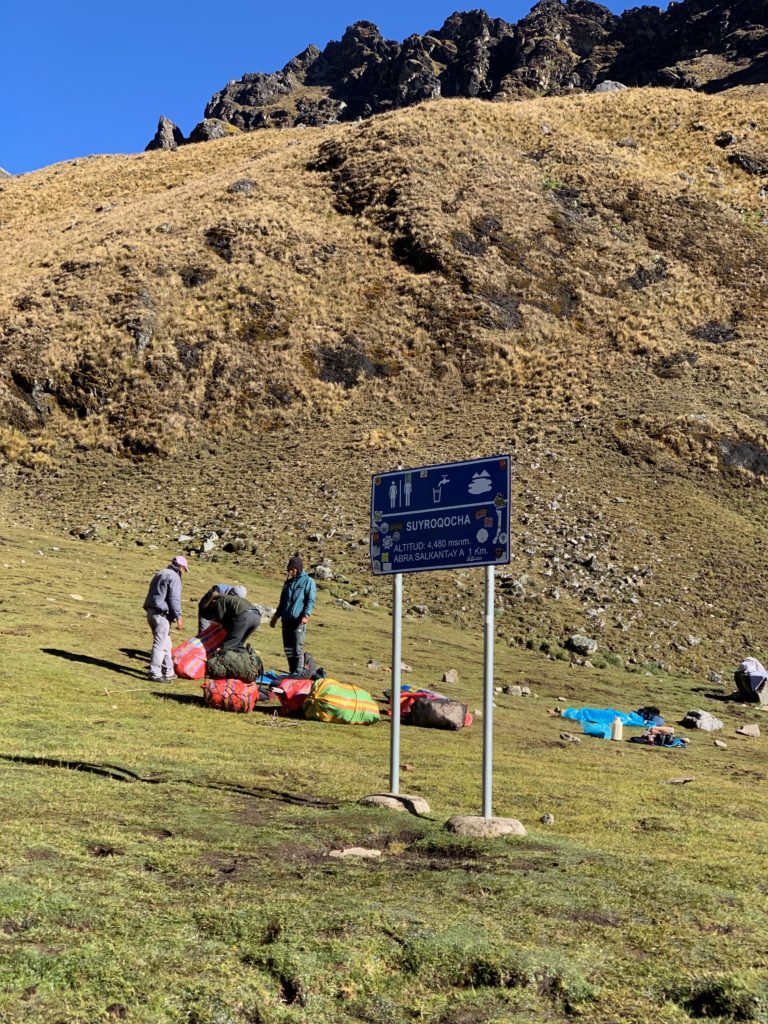
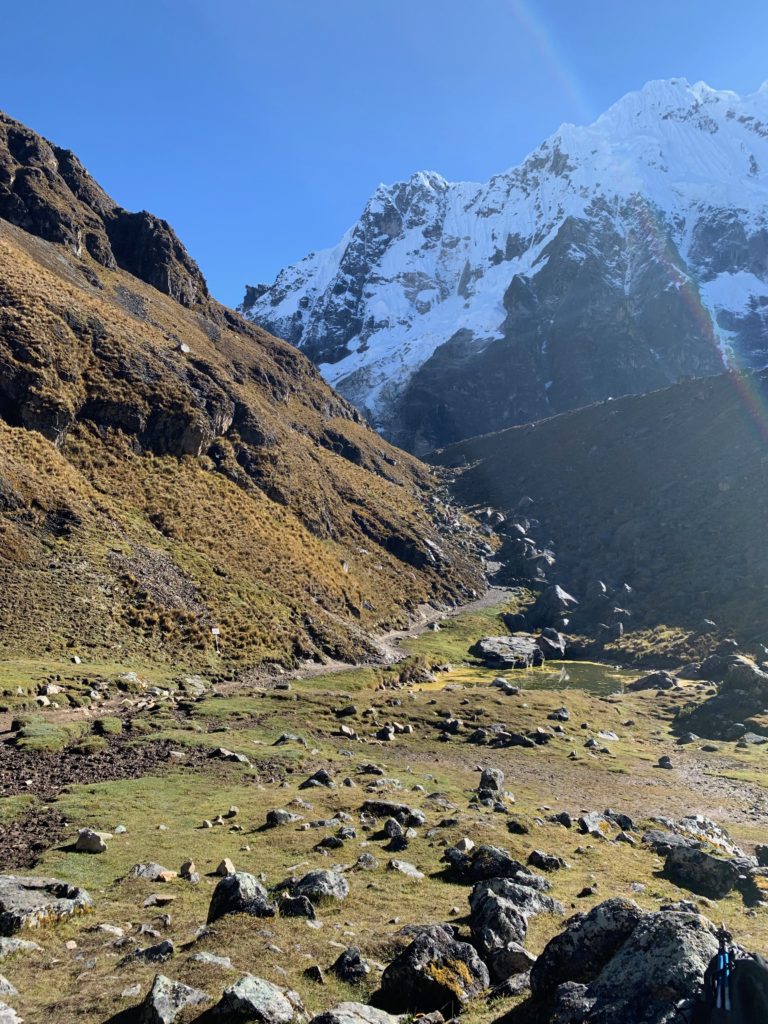
Eventually, the steep trail gave way and we reached a clearing in the mountains. Salkantay Mountain appeared closer than ever, yet we still had one more final push before reaching the highest point on the trek. We took a pause at this flat area to rest and take advantage of the nearby restroom. Overall, the group was holding up very well, even though we were all experiencing the challenge of this hike. However, the beauty of doing this kind of trek in a group is that we all got to struggle together, which brought us closer as friends.
Salkantay Pass
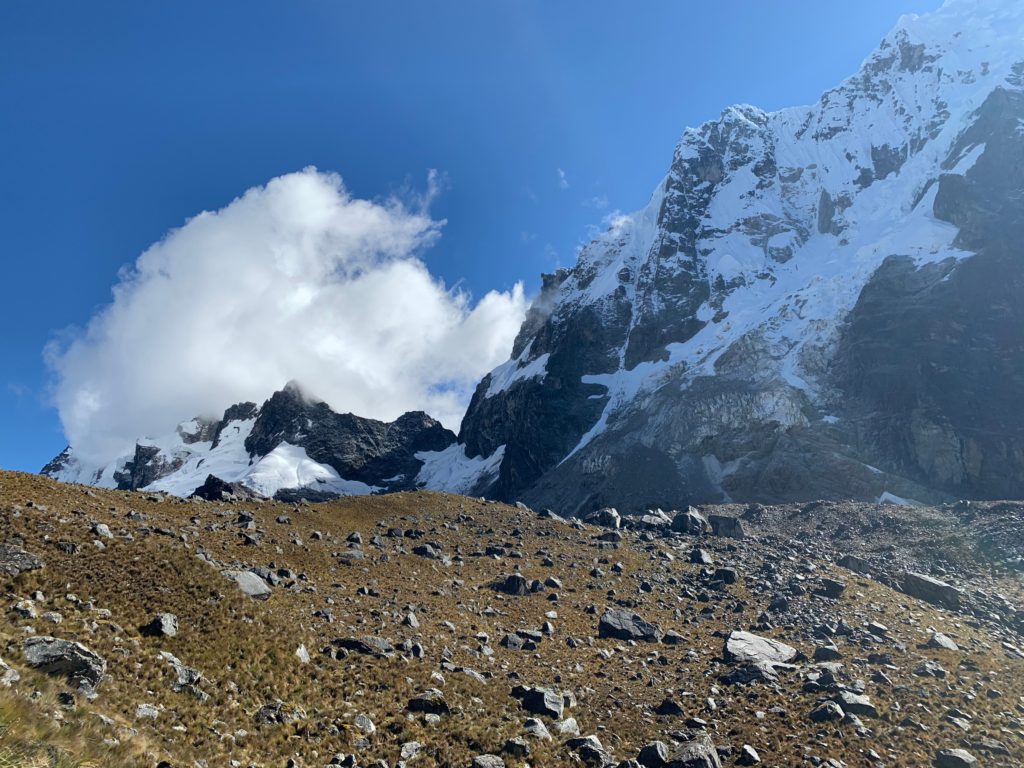
We approached the home stretch as we continued up one final incline. The snow-capped mountain was in full view as we entered the Salkantay Pass. Compared to the valley below, the pass had a rocky terrain, with no grass due to its high elevation. The altitude was killing me and my headache was getting worse, but I had no choice but to keep going forward. I walked up the last incline and arrived at the summit!!!
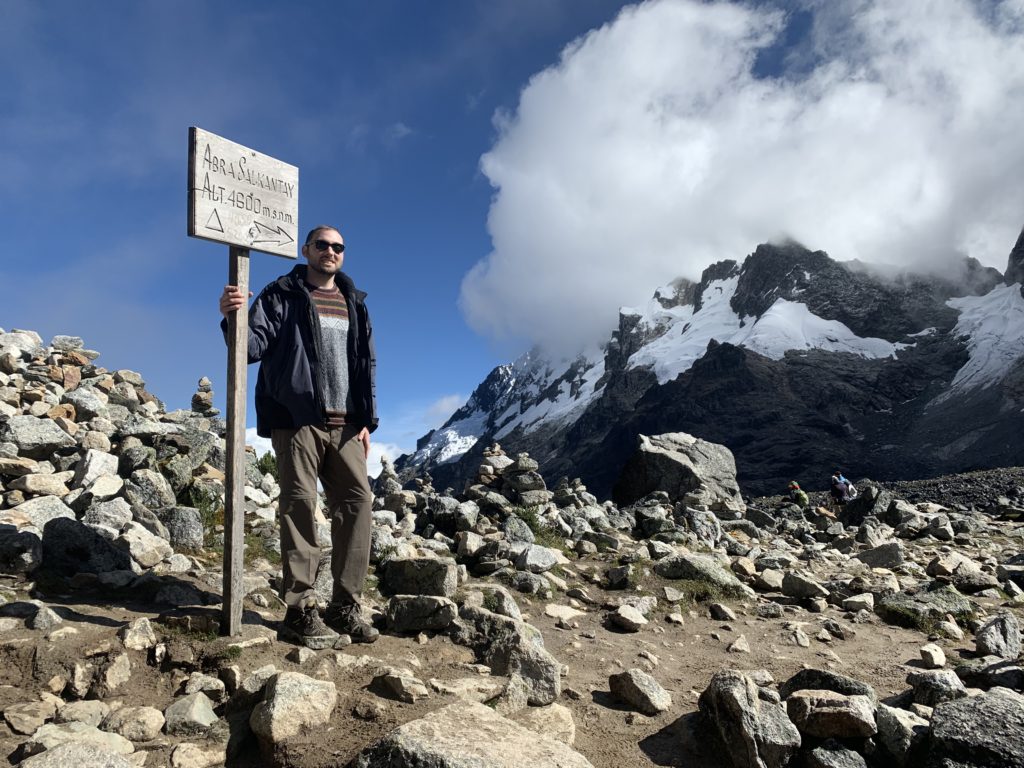
At 15,190 feet, this was the highest in elevation I had ever been in my life. Reaching this point was one of my proudest accomplishments throughout my travels, as it was no easy feat. Elvis pulled us aside for another Inca culture lesson. Salkantay Mountain was an important site for the Incas. The name roughly translates to “Savage Mountain,” as it is prone to sudden avalanches. The Incas believed that the mountain contained a spirit known as “Apu.” They viewed the mountain spirit as a protector over their land and often made sacrifices to please it.
Elvis gave us the option to hike over to one of his favorite lakes, which was about a half-hour walk each way. Everyone in the group was interested, so we proceeded across the rocky terrain towards the lake. Even though the hike was flat, it was extremely strenuous. It took every last bit of energy in me to traverse across the rocks, and I consistently felt out of breath.
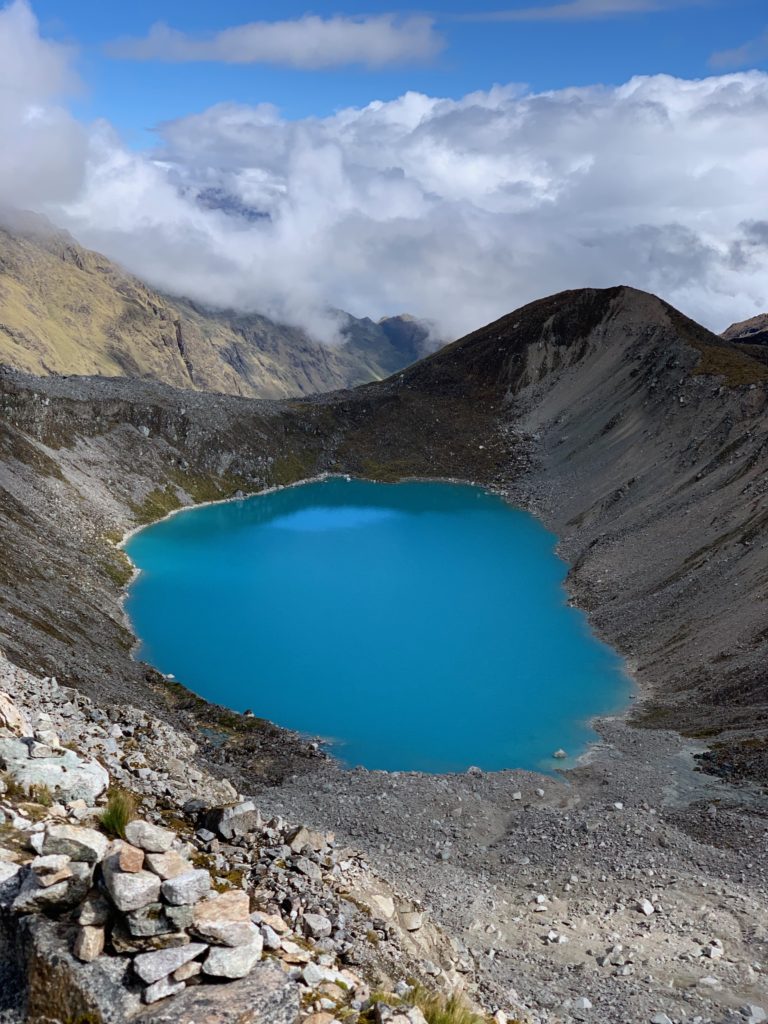
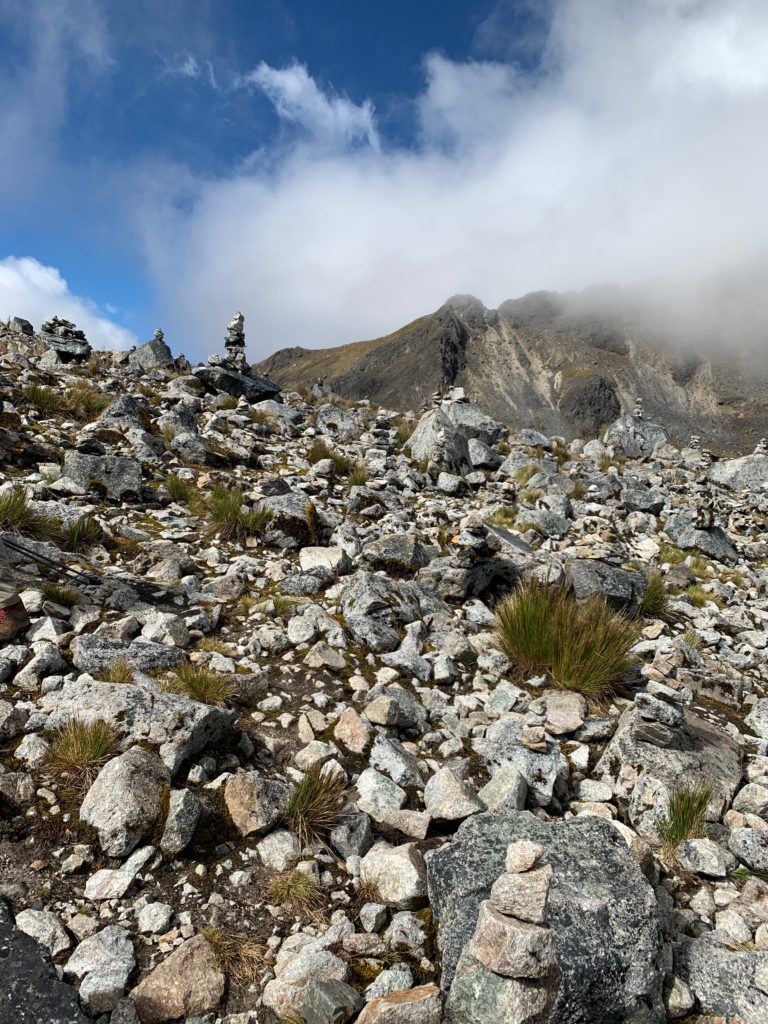
Once there, however, I was rewarded with another bright colored lake filled with glacial water. There is something special about the way that melted glaciers can produce water that is both clear and pure. A few years ago, the Salkantay Pass was completely covered with ice. It has since melted due to climate change, leaving a mix of lakes and rocky terrain. After admiring the scenery, we walked back over to the Salkantay sign. Our chef met us there and served us coca tea at the summit.
The Initial Descent
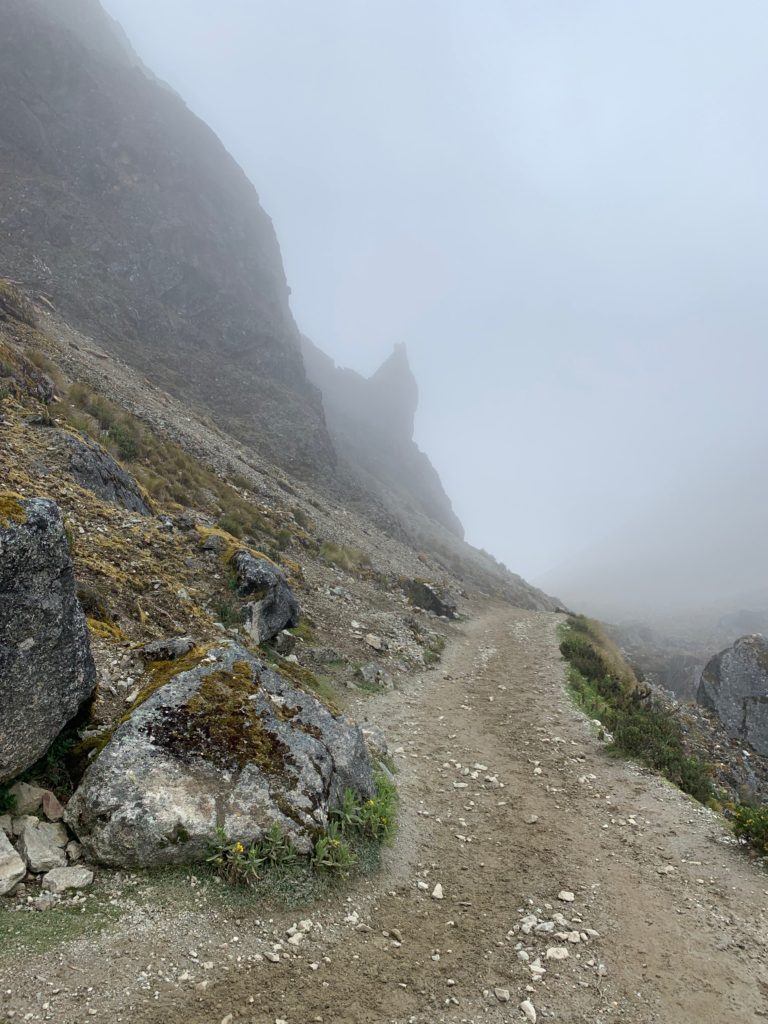
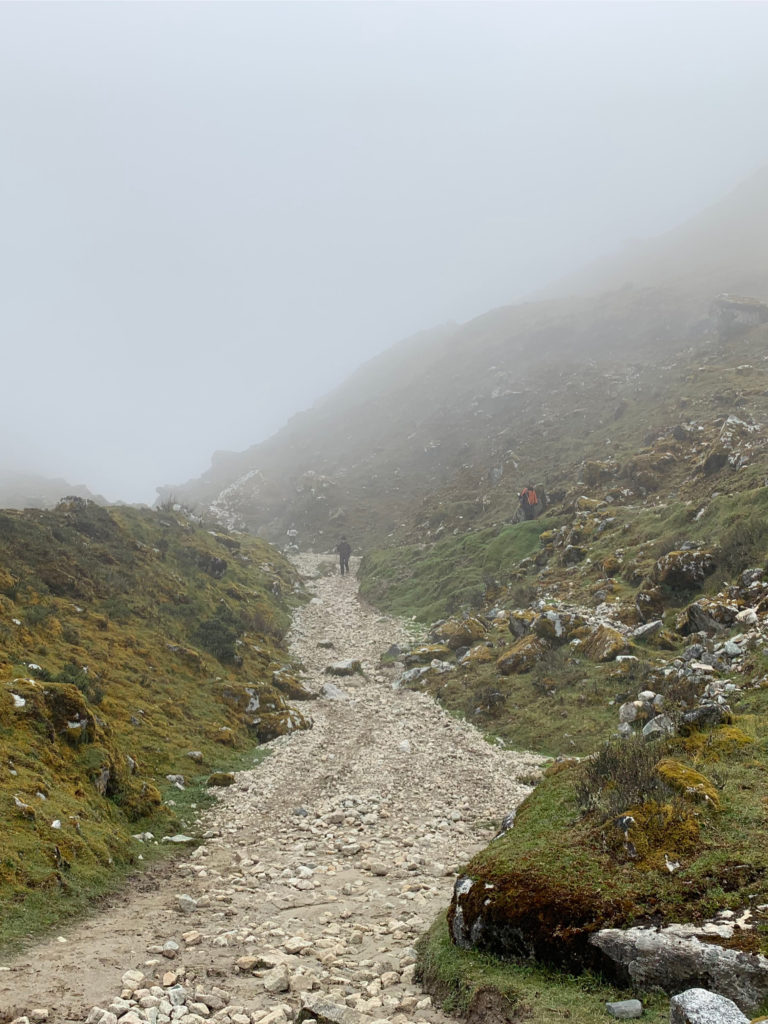
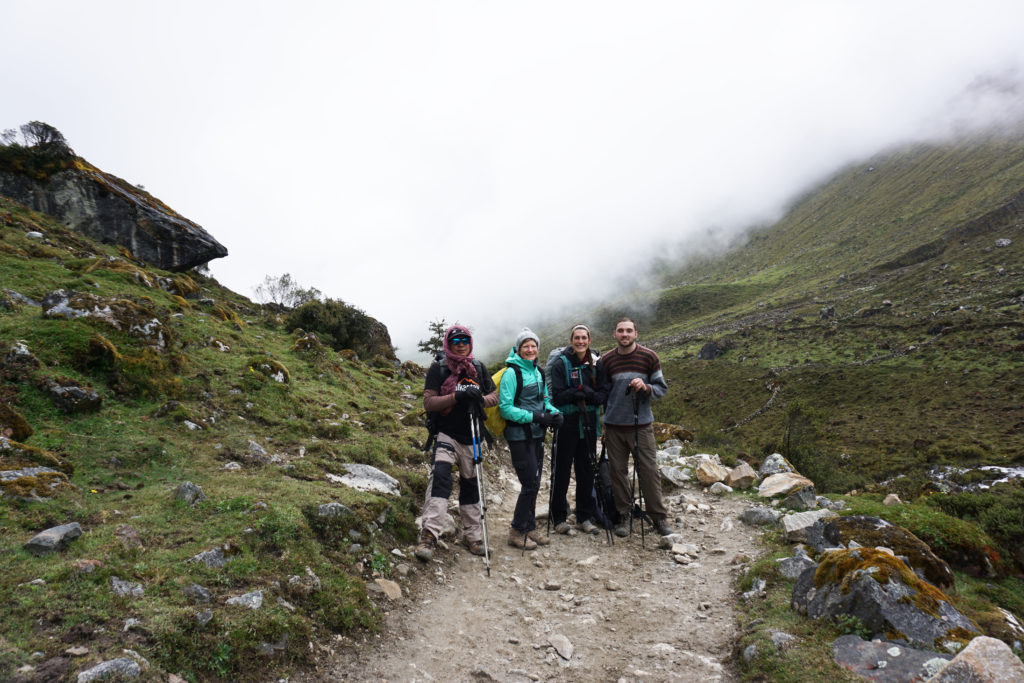
From here, it was all downhill. As we began our descent, the weather drastically changed from mostly clear to completely foggy. Shortly after, it began to drizzle. The surrounding fog gave the land a mystical appearance. This is what I pictured Iceland and Scotland to look like, with rolling mountains covered in fog. We passed by several unique rock formations. As we continued along, the land became more vegetated, with small shrubs starting to appear.
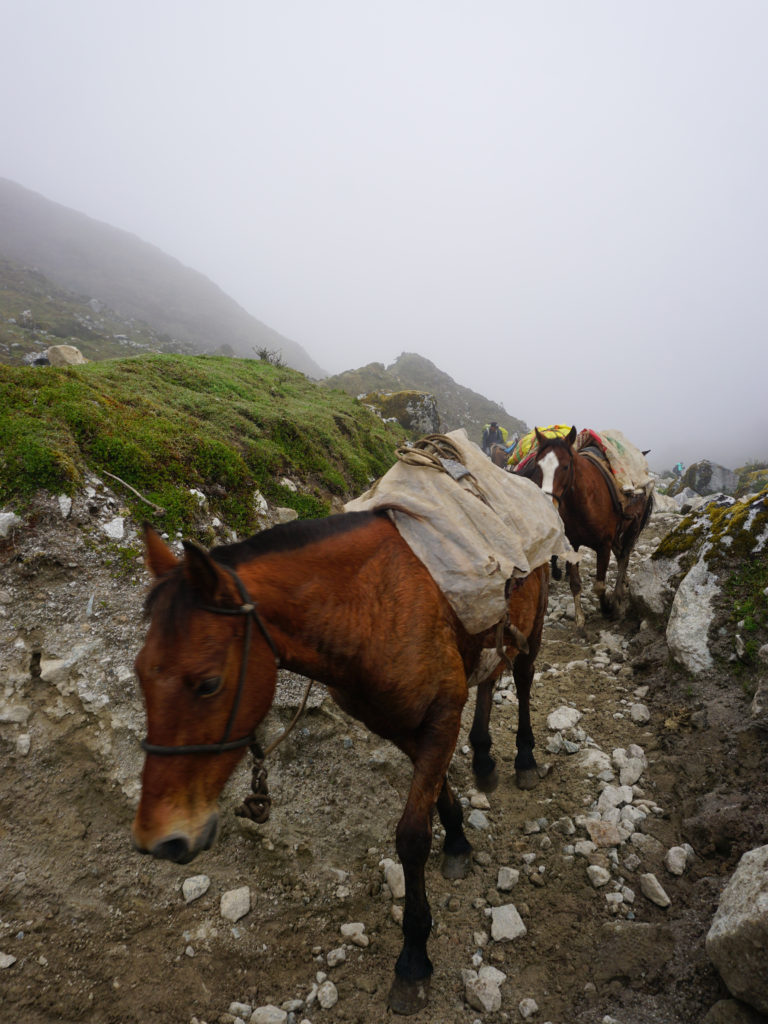
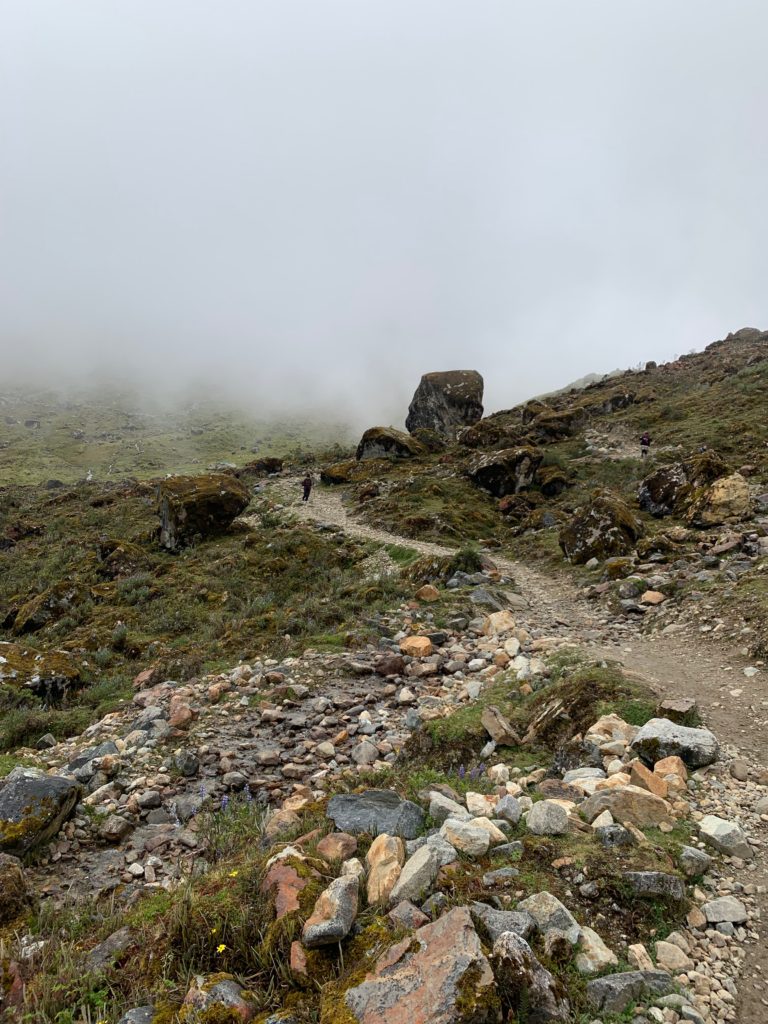
On the way down, we passed by a number of horses that were trekking back up the mountain. These were the same horses that carried our duffel bags between campsites every day. We also had to periodically pull aside for mountain bikers. These brave men would ride at a high speed from the top of the Salkantay Pass down to the jungle. We all agreed that none of us were brave enough to partake in that extreme sport.
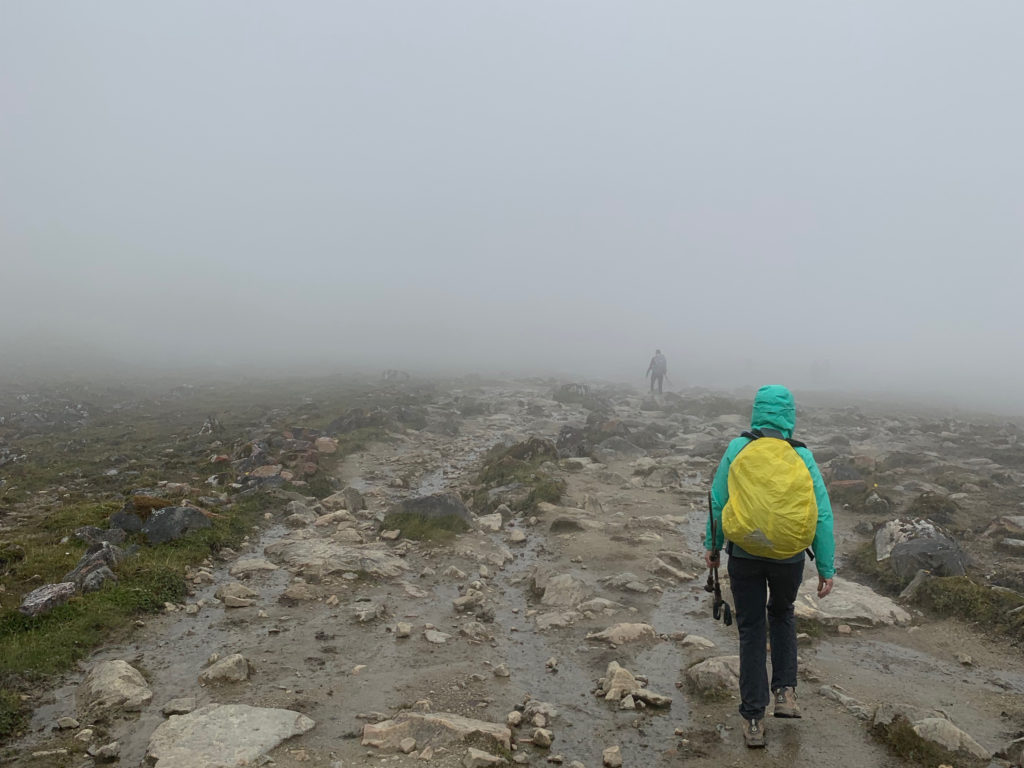
As we approached the lower elevation levels, the hike was getting noticeably easier. I felt like I could take deep breaths again, and the weather was changing from freezing cold to slightly chilly. By now, the drizzle turned into a steady rain, and the surrounding visibility became essentially nonexistent. Patty, Amy, and I followed a barely visible path in search of our lunch campsite. Unfortunately, we had gone ahead and could not find Elvis. During the hike, Elvis gave us two ground rules: don’t die, and don’t get lost. Clearly, the three of us were lost
“Salkantay Trekking?” Patty asked.
The man gave us a nod. We had finally arrived at our campsite for lunch! Ilana, Maggie, and Elvis caught up with us shortly after. We were treated to another delicious Peruvian meal, which is exactly what I needed after our intense hike through the pass. Thankfully, the rain began to lighten up as the sun shined over the beautiful mountain landscape.
Entering the Jungle
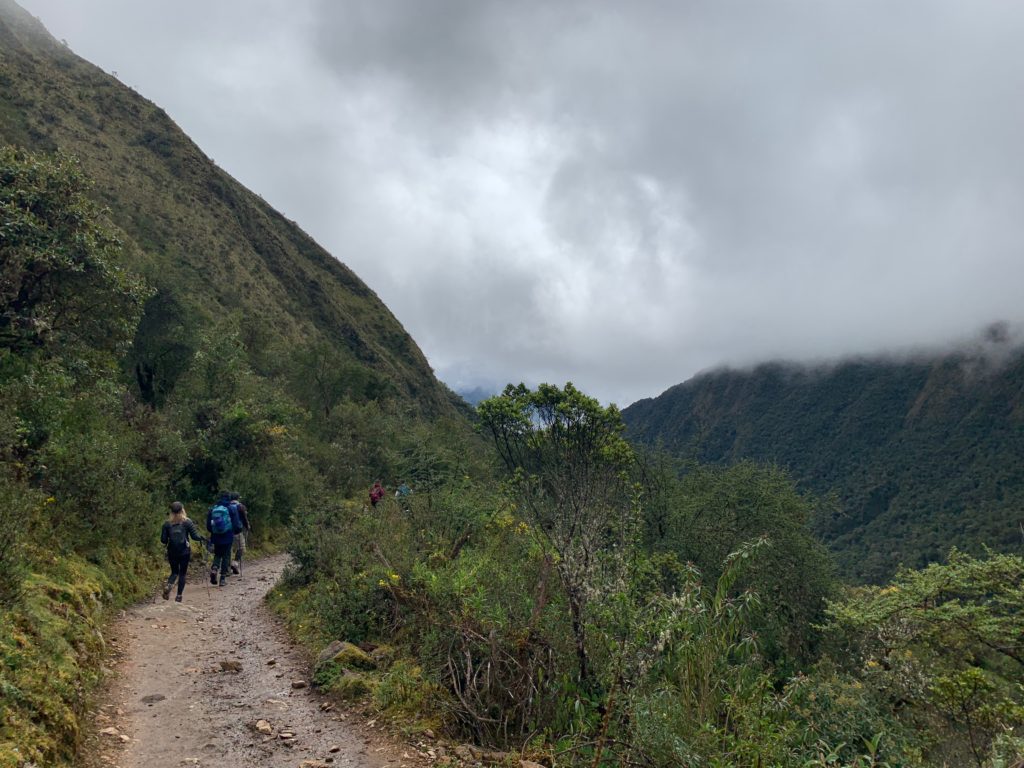
After a hearty lunch, our group continued following the trail down the valley. From this point forward, our hike would take us out of the alpine mountains and into the high jungle. In contrast to the rugged mountains and sparse vegetation in the Salkantay Pass, the terrain here was covered with bushes, giving the mountains a lush green appearance.
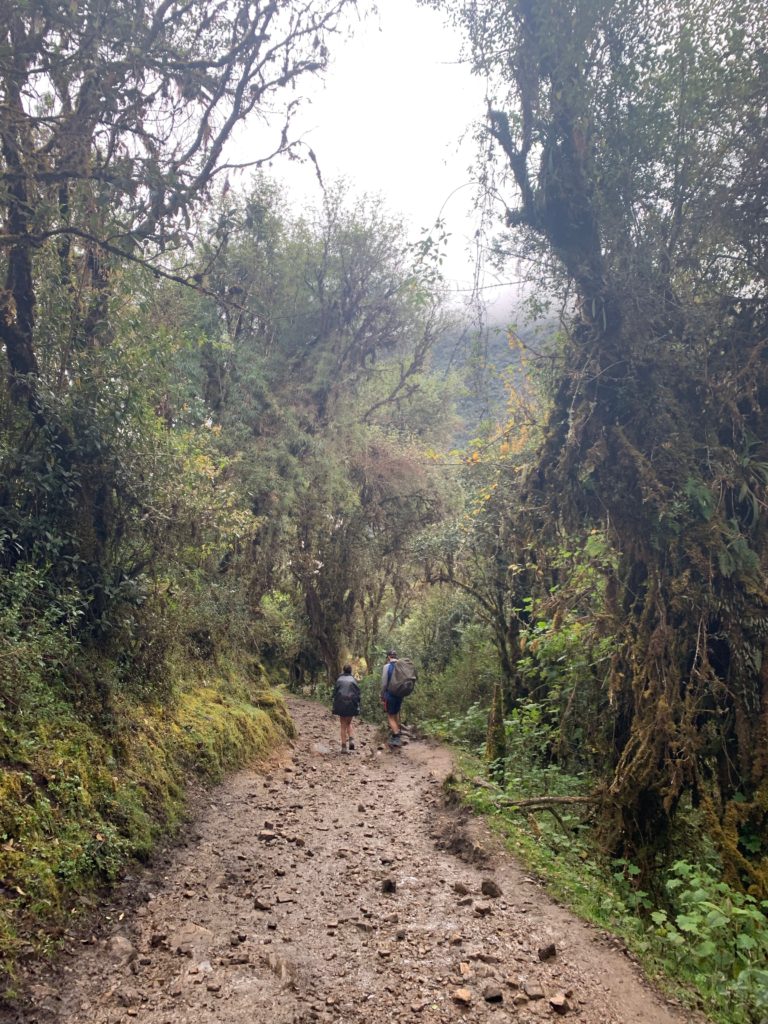
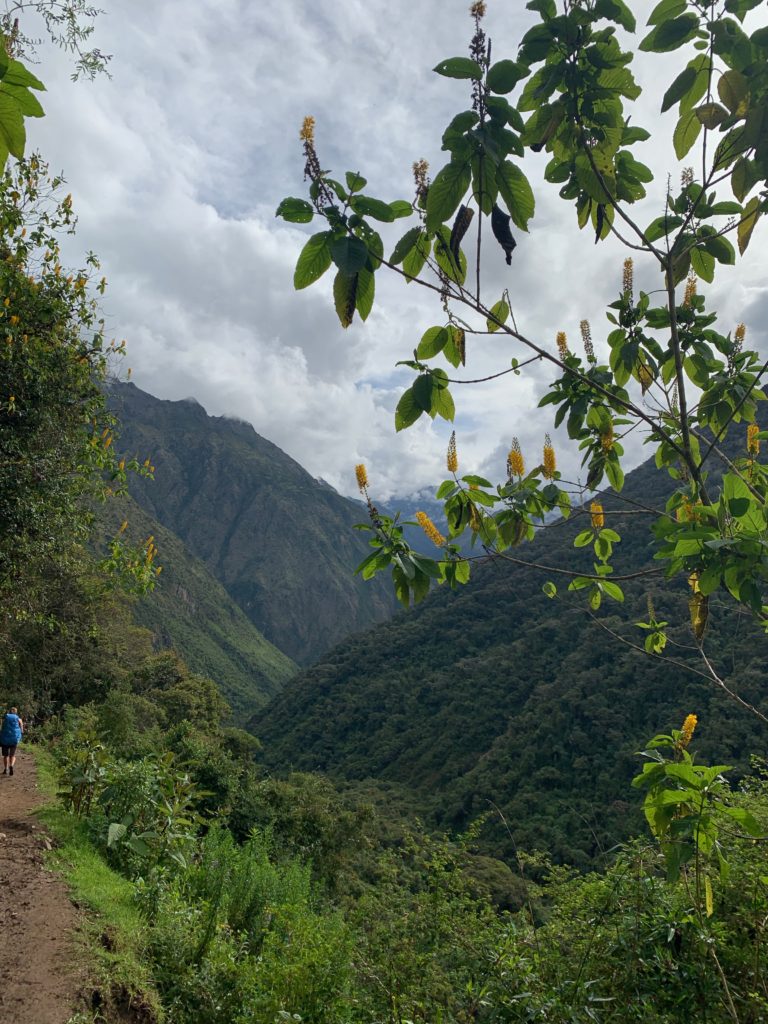
As we kept moving forward, the landscape surrounding the path became even denser. The trail was lined with tall trees and other colorful plants. In addition,
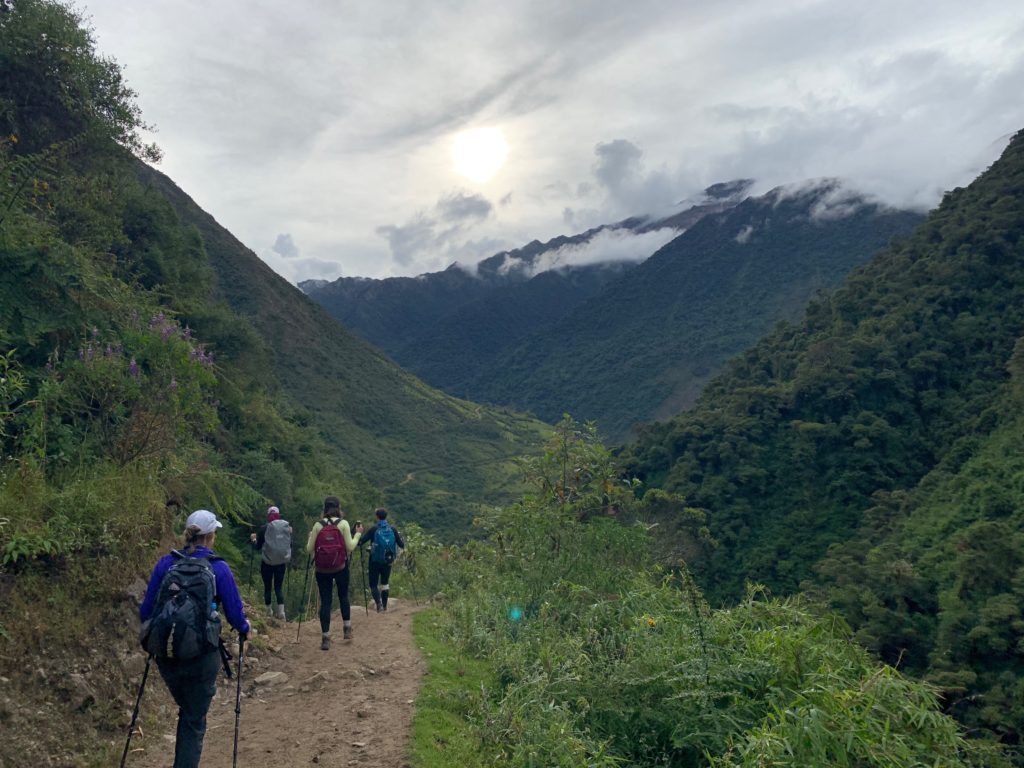
By now, our entire group was tired and we couldn’t wait to finally reach our next base camp. We asked Elvis how much further we had to walk. He said we had about another half hour to go. Despite our tiredness, we continued our trek down the hill. A bit later, we could see some rustic wooden buildings in a clearing next to a river. There appeared to be several small settlements within the valley, and we could once again see a dirt road in the distance. Elvis directed us into the first village before the valley made a sharp turn to the north.
Chaullay
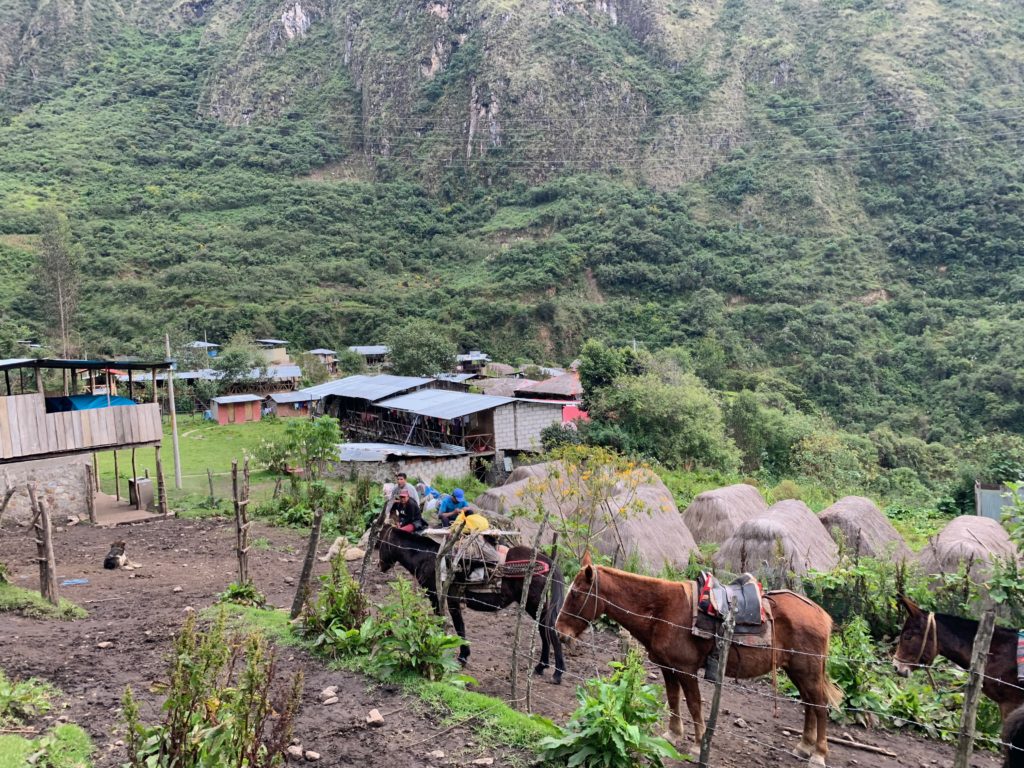
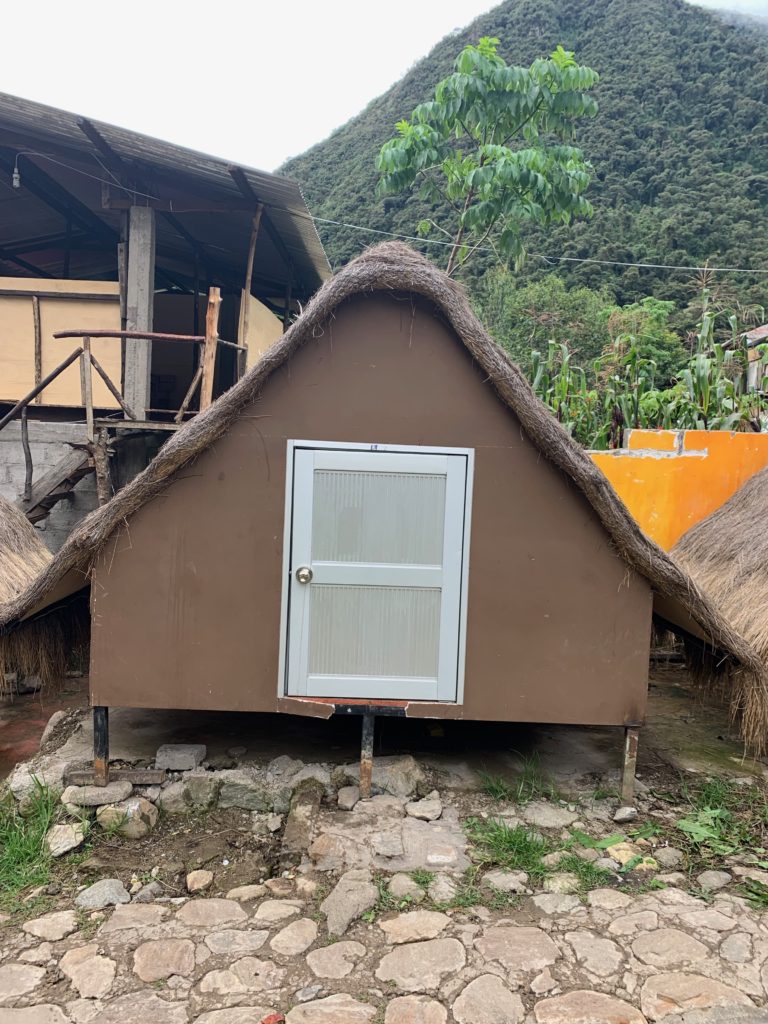
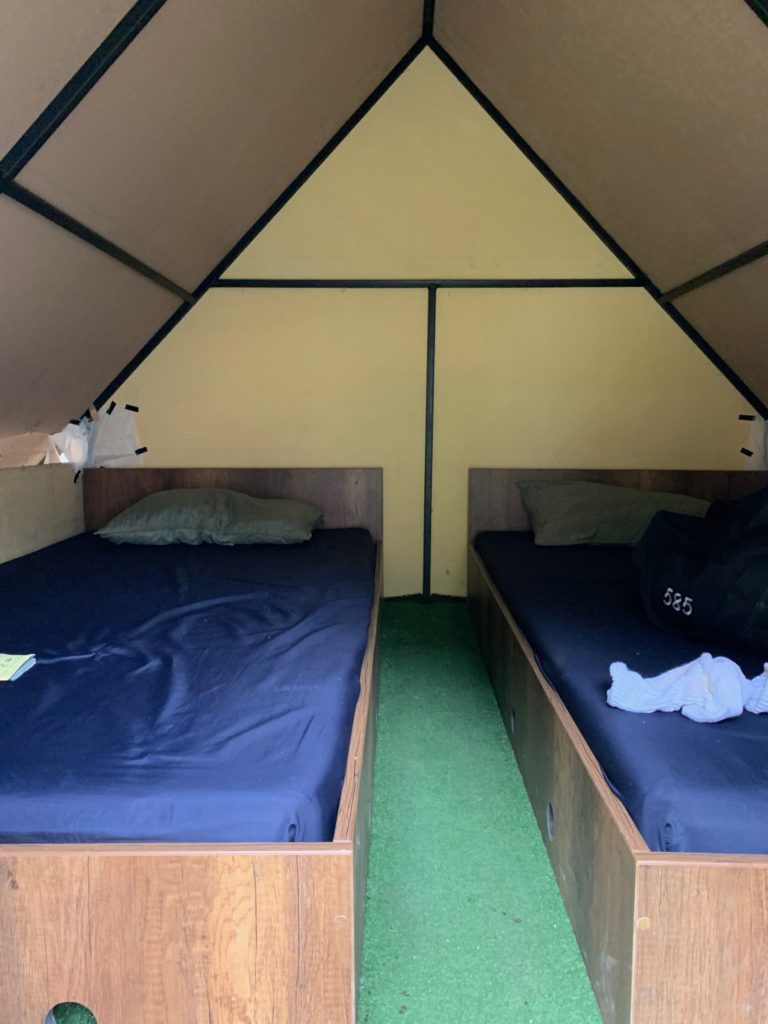
We had arrived at our campsite for the night in the village of Chaullay. The elevation here was much lower, at only 9,022 feet. Our accommodation for the night consisted of wooden huts. Each had a thatched roof and a simple brown façade with a single door. Inside, the huts had two twin-sized beds below a fabric ceiling. Unlike our first campsite, this one did not have electricity inside the huts. Thankfully, for a fee, the campsite had both hot showers and wifi, which was a relief compared to the sky camp, which lacked both.
After a quick rest, our group gathered for a snack, followed by dinner in an upstairs loft area. We all felt a huge sense of accomplishment for completing the most difficult day of the trek. We knew that the rest of the journey was going to be a lot easier going forward and that we were one day closer to reaching the famed Machu Picchu.
